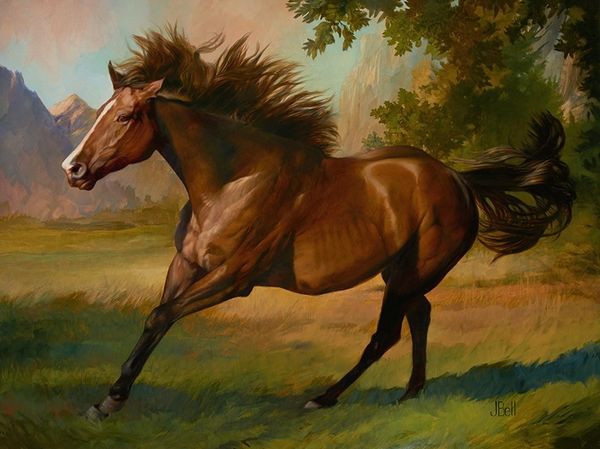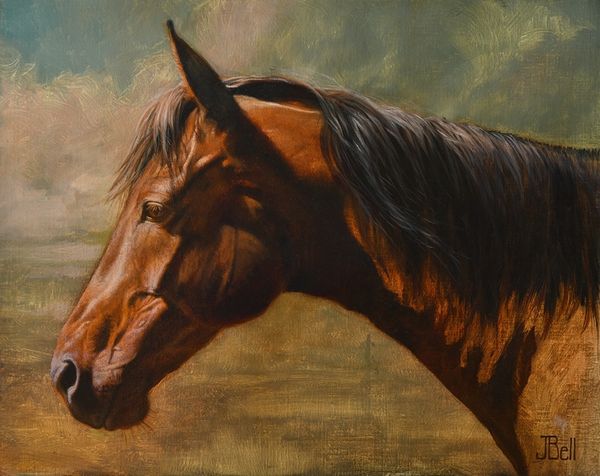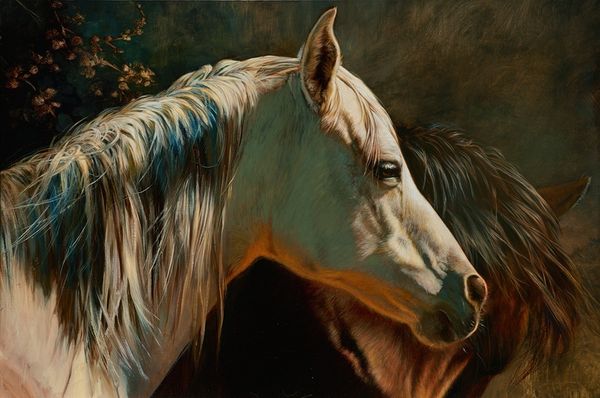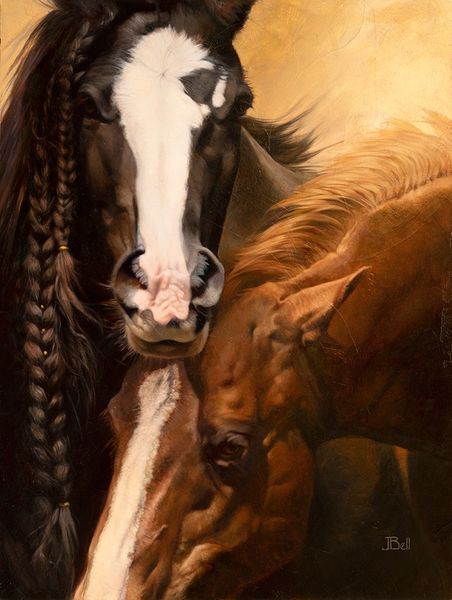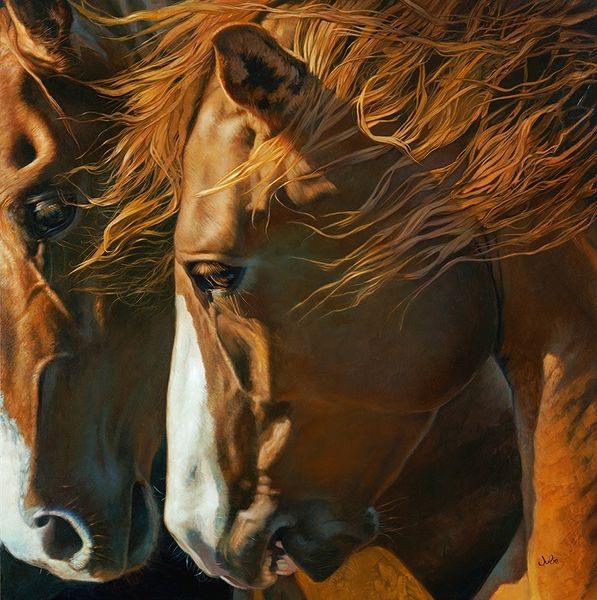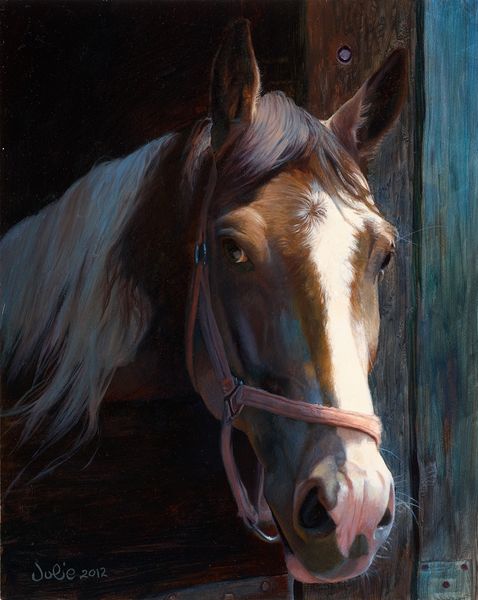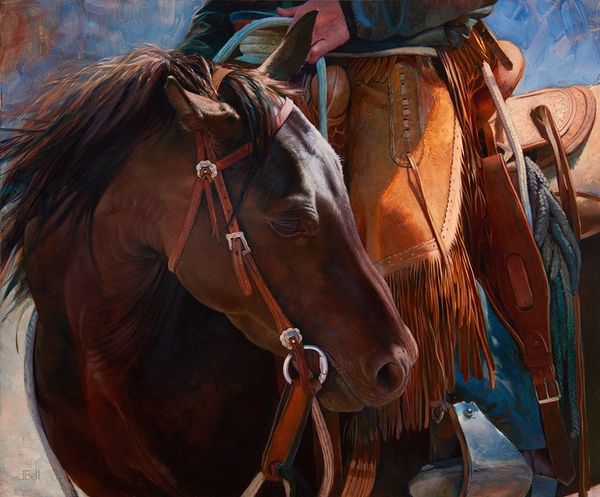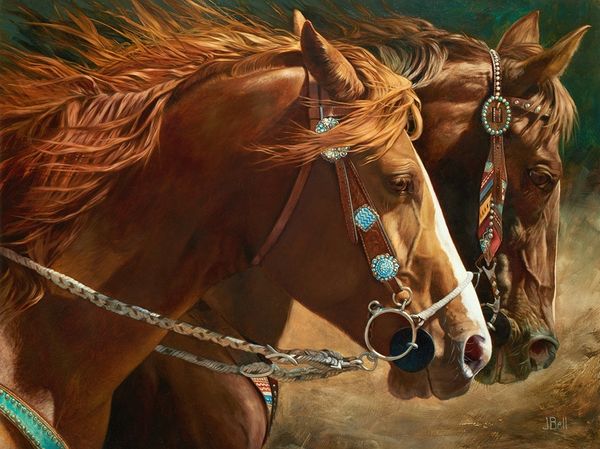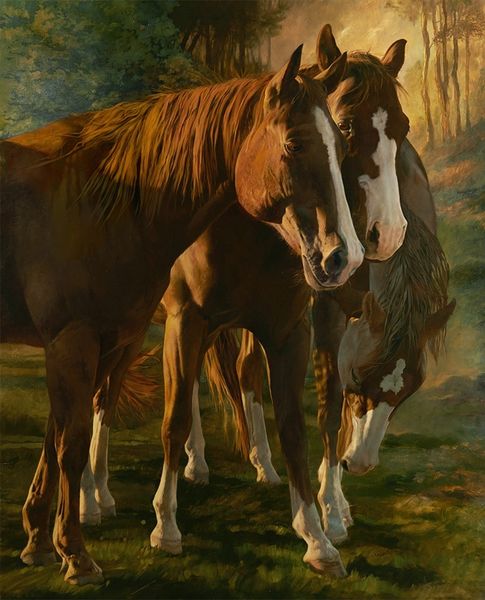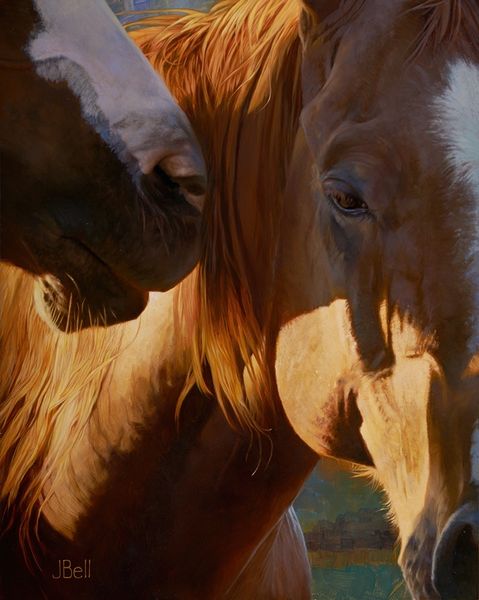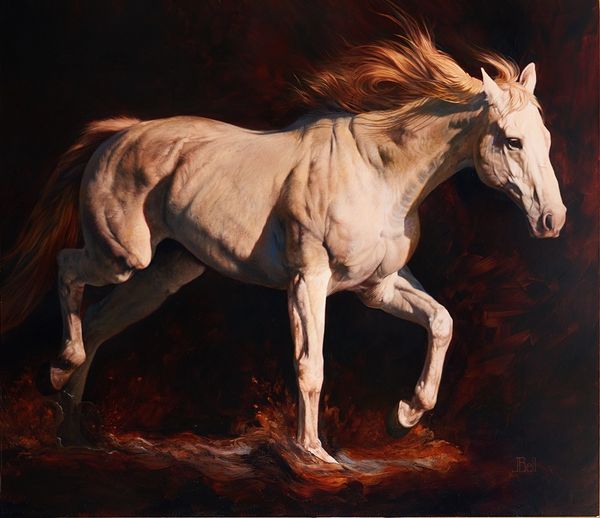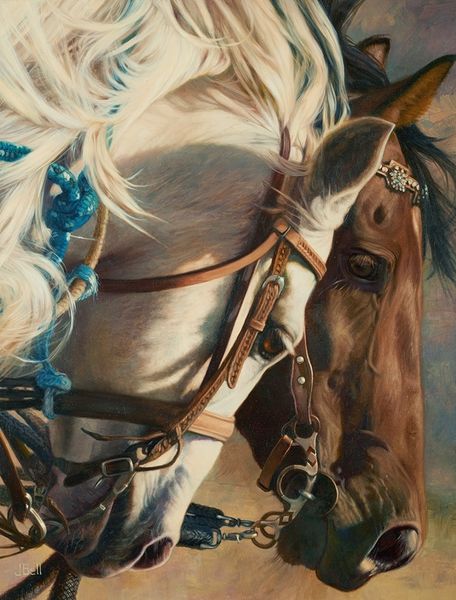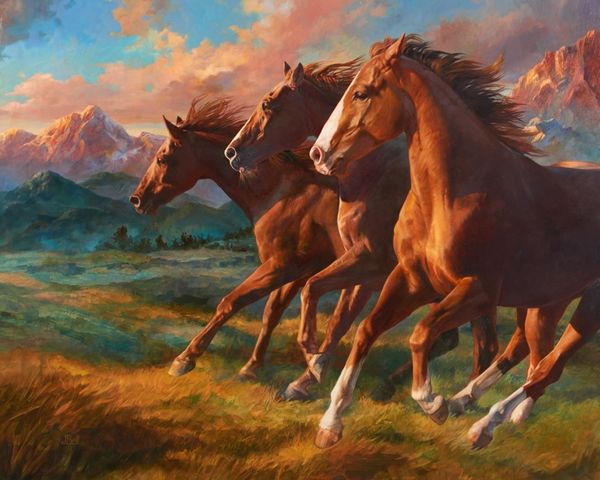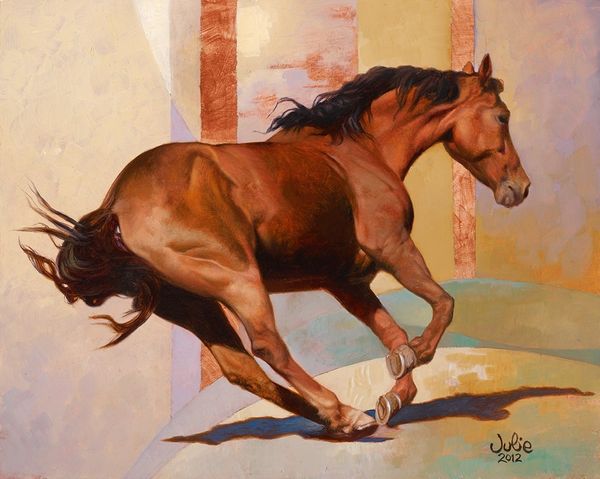
oil-paint, impasto
#
portrait
#
animal
#
oil-paint
#
oil painting
#
impasto
#
portrait reference
#
portrait head and shoulder
#
animal portrait
#
animal drawing portrait
#
portrait drawing
#
facial portrait
#
portrait art
#
fine art portrait
#
realism
#
digital portrait
Copyright: Modern Artists: Artvee
Editor: Julie Bell’s "Suzy Q" rendered in oil paint, presents us with the portrait of a horse. What strikes me is the tangible texture of the impasto and the way it seems to bring the animal to life. What can you tell us about this piece? Curator: Looking at this, I’m particularly drawn to the application of oil paint itself. Consider the labor invested in the repetitive, almost granular buildup of impasto. Does this labor serve to elevate a common animal portrait to “high art,” or does it democratize the genre by emphasizing the physical process over idealized representation? Editor: That's an interesting way to frame it. It feels like a deliberate act. Curator: Precisely. Bell's choice of oil paint, a traditionally valued material, invites a consideration of class and consumption. Who typically commissions such portraits, and what does it signify when the subject is not human, but an animal? The materials here become charged signifiers of cultural value. How do the historical connotations of oil paint as a medium for portraying the wealthy affect our reading of this subject matter? Editor: It makes you wonder about the role of the animal in society. The choice to portray a horse in this medium elevates the animal to a commodity of sorts, like a pet, to this level of regard and attention. Curator: Indeed! Furthermore, consider the tools employed to manipulate the oil paint. Are brushes or palette knives privileged, and what are their individual impact on the final appearance of this oil-based image? And what about the labor of the unseen, such as sourcing the pigments themselves? How much can this materiality shift how we percieve a “classic” artwork? Editor: I see what you mean! Looking at "Suzy Q" through the lens of its material construction offers a more grounded understanding of art production and how choices reflect a broader set of cultural relationships. Curator: Exactly. The focus on process and materials opens the doors for considering socio-economic issues. We appreciate the layers here now.
Comments
No comments
Be the first to comment and join the conversation on the ultimate creative platform.
